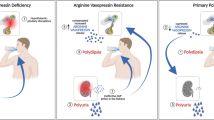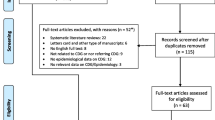Abstract
As an extended gamut of integral membrane (extrinsic) proteins, and based on their transporting specificities, P-type ATPases include five subfamilies in Arabidopsis, inter alia, P4ATPases (phospholipid-transporting ATPase), P3AATPases (plasma membrane H+ pumps), P2A and P2BATPases (Ca2+ pumps) and P1B ATPases (heavy metal pumps). Although, many different computational methods have been developed to predict substrate specificity of unknown proteins, further investigation needs to improve the efficiency and performance of the predicators. In this study, various attribute weighting and supervised clustering algorithms were employed to identify the main amino acid composition attributes, which can influence the substrate specificity of ATPase pumps, classify protein pumps and predict the substrate specificity of uncharacterized ATPase pumps. The results of this study indicate that both non-reduced coefficients pertaining to absorption and Cys extinction within 280 nm, the frequencies of hydrogen, Ala, Val, carbon, hydrophilic residues, the counts of Val, Asn, Ser, Arg, Phe, Tyr, hydrophilic residues, Phe-Phe, Ala-Ile, Phe-Leu, Val-Ala and length are specified as the most important amino acid attributes through applying the whole attribute weighting models. Here, learning algorithms engineered in a predictive machine (Naive Bays) is proposed to foresee the Q9LVV1 and O22180 substrate specificities (P-type ATPase like proteins) with 100 % prediction confidence. For the first time, our analysis demonstrated promising application of bioinformatics algorithms in classifying ATPases pumps. Moreover, we suggest the predictive systems that can assist towards the prediction of the substrate specificity of any new ATPase pumps with the maximum possible prediction confidence.


Similar content being viewed by others
References
Altschul SF et al. (1997) Gapped BLAST and PSI-BLAST: a new generation of protein database search programs. Nucleic Acids Res 25:3389–3402
Ashrafi E, Alemzadeh A, Ebrahimi M, Ebrahimie E, Dadkhodaei N, Ebrahimi M (2011) Amino acid features of P1B-ATPase heavy metal transporters enabling small numbers of organisms to cope with heavy metal pollution. Bioinform Biol Insights 5:59–82
Axelsen KB, Palmgren MG (1998) Evolution of substrate specificities in the P-type ATPase superfamily. J Mol Evol 46:84–101
Axelsen KB, Palmgren MG (2001) Inventory of the superfamily of P-type ion pumps in Arabidopsis. Plant Physiol 126:696–706
Beiki AH, Saboor S, Ebrahimi M (2012) A new avenue for classification and prediction of olive cultivars using supervised and unsupervised algorithms. PLoS One 7:44164
Caitlyn L, Mills PJ, Beuning MJ (2015) Biochemical functional predictions for protein structures of unknown or uncertain function. Comput Struct Biotechnol J 13:182–191
Cameron M, Williams HE, Cannane A (2004) Improved gapped alignment in BLAST. IEEE/ACM Trans Comput Biol Bioinform 1:116–129
Chi X, Hou J (2011) An iterative approach of protein function prediction. BMC Bioinformatics 12:437
Cronin SR, Khoury A, Ferry DK, Hampton RY (2000) Regulation of HMG-CoA reductase degradation requires the P-type ATPase Cod1p/Spf1p. J Cell Biol 148:915–924
Dipolo R, Beaug© L (2005) Sodium/calcium exchanger: influence of metabolic regulation on ion carrier interactions. Physiol Rev 86:155–203
Domingos P, Pazzani M (1997) On the optimality of the simple Bayesian classifier under zero-one loss. Mach Learn 29:103–130
Ebrahimi M, Ebrahimie E (2010) Sequence-based prediction of enzyme thermo-stability through bioinformatics algorithms. Curr Bioinforma 5:195–203
Ebrahimi M, Ebrahimie E, Ebrahimi M (2009) Searching for patterns of thermo-stability in proteins and defining the main features contributing to enzyme thermo stability through screening, clustering, and decision tree algorithms. EXCLI J 8:218–233
Ebrahimi M, Ebrahimie E, Shamabadi N (2010) Are there any differences between features of proteins expressed in malignant and benign breast cancers? J Res Med Sci 15:299–309
Ebrahimi M, Lakizadeh A, Agha-Golzadeh P, Ebrahimie E (2011) Prediction of thermostability from amino acid attributes by combination of clustering with attribute weighting: a new vista in engineering enzymes. PLoS One 6:e23146
Ebrahimi M, Agha-golzadeh P, Shamabadi N, Tahmasebi A, Alsharifi M, Adelson DL, Hemmatzadeh F, Ebrahimie E (2014) Understanding the underlying mechanism of HA-subtyping in the level of physic-chemical characteristics of protein. PLoS One 9:e96984
Ebrahimie E, Ebrahimi M, Sarvestani NR (2011) Protein attributes contribute to halo-stability, bioinformatics approach. Saline Systems 7:1
Gherardini PF, Helmer-Citterich M (2008) Structure-based function prediction: approaches and applications. Brief Funct Genomic Proteomic 7:291–302
Gomes E, Jakobsen MK, Axelsen KB, Geisler M, Palmgren MG (2000) Chilling tolerance in Arabidopsis involves ALA1, a member of a new family of putative aminophospholipid translocases. Plant Cell 12:2441–2454
Hammann F, Gutmann H, Jecklin U, Maunz A, Helma C, Drewe J (2009) Development of decision tree models for substrates, inhibitors, and inducer of P-glycoprotein. Curr Drug Metab 10:339–346
Holm L, Rosenstrom P (2010) Dali server: conservation mapping in 3D. Nucleic Acids Res 38:W545–W549
Holm L, Kaariainen S, Wilton C, Plewczynski D (2006) Using Dali for structural comparison of proteins. Curr Protoc Bioinformatics S14:5.5.1–5.5.24
Lee D, Redfern O, Orengo C (2007) Predicting protein function from sequence and structure. Nat Rev Mol Cell Biol 8:995–1005
Leichert LI, Jakob U (2006) Global methods to monitor the thio--disul-fide state of proteins in vivo. Antioxid Redox Signal l8:763–772
Loewenstein Y et al. (2009) Protein function annotation by homology-based inference. Genome Biol 10:207
Mattle D, Sitse O, Autzen HE, Meloni G, Gourdon P, Nissen P (2013) On allosteric modulation of p-type Cu +-ATPases. J Mol Biol 425:2299–2308
Møller JV, Juul B, Le Maire M (1996) Structural organization, ion transport, and energy transduction of P-type ATPases. Biochim Biophys Acta 1286:1–51
Nasiri J, Naghavi MR, Kayvanjoo AH, Nasiri M, Ebrahimi M (2015) Precision assessment of some supervised and unsupervised algorithms for genotype discrimination in the genus Pisum using SSR molecular data. J Theor Biol 368:122–132
Palmgren MG, Harper JF (1999) Pumping with plant P-type ATPases. J Exp Bot 50:883–893
Skolnick J, Brylinski M (2009) FINDSITE: a combined evolution/structure-based approach to protein function prediction. Brief Bioinform 10:378–391
Sleator RD, Walsh P (2010) An overview of in silico protein function prediction. Arch Microbiol 192:151–155
Tang X, Halleck MS, Schlegel RA, Williamson P (1996) A subfamily of P-type ATPases with aminophospholipid transporting activity. Science 272:1495–1497
Watson JD, Laskowski RA, Thornton JM (2005) Predicting protein function from sequence and structural data. Curr Opin Struct Biol 15:275–284
Wilkins AD, Bachman BJ, Erdin S, Lichtarge O (2012) The use of evolutionary patterns in protein annotation. Curr Opin Struct Biol 22:316–325
Williams LE, Mills RF (2005) P1B-ATPases – an ancient family of transition metal pumps with diverse functions in plants. Trends Plant Sci 10:491–502
Zinati Z, Zamansani F, KayvanJoo A, Ebrahimi M, Ebrahimi M, Ebrahimie E, Mohammadi Dehcheshmeh M (2014) New layers in understanding and predicting α-linolenic acid content in plants using amino acid characteristics of omega-3 fatty acid desaturase. Comput Biol Med 54:14–23
Acknowledgments
We would like to greatly thank Department of Agroecology of Agriculture and Natural Resources of Darab for supporting this research.
Author information
Authors and Affiliations
Corresponding author
Rights and permissions
About this article
Cite this article
Zinati, Z., Alemzadeh, A. & KayvanJoo, A.H. Computational approaches for classification and prediction of P-type ATPase substrate specificity in Arabidopsis. Physiol Mol Biol Plants 22, 163–174 (2016). https://doi.org/10.1007/s12298-016-0351-5
Received:
Revised:
Accepted:
Published:
Issue Date:
DOI: https://doi.org/10.1007/s12298-016-0351-5




